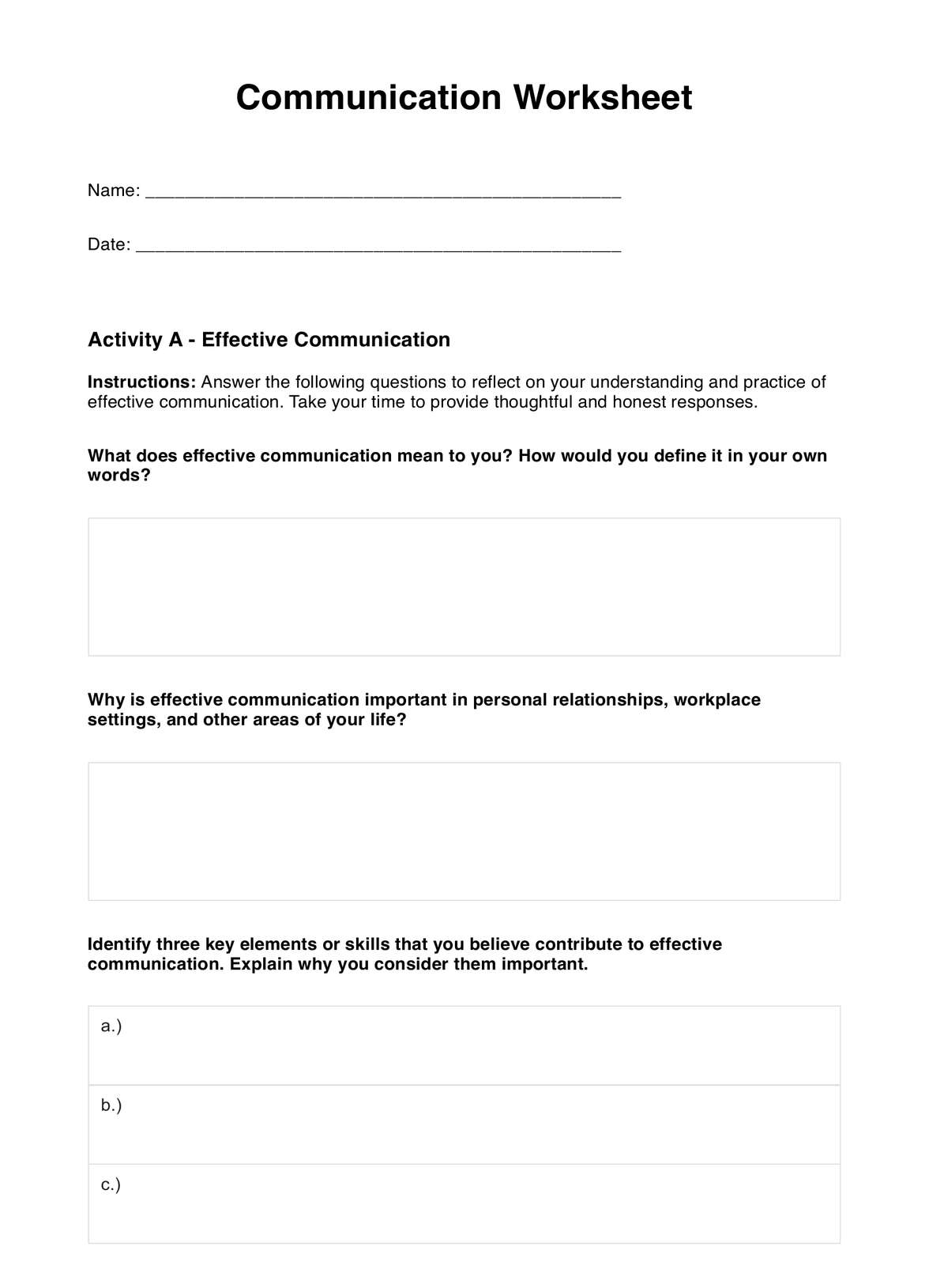Effective communication involves several key elements, including active listening, clear and concise language, empathy and understanding, a non-judgmental approach, and effective feedback. Specific communication strategies, such as using open-ended questions and reflective listening, are also key to effective communication. It requires the communicator to engage with the speaker, avoiding ambiguity and jargon fully, and show compassion and understanding, considering the other person’s perspective.

Communication Worksheets
Use this communication worksheet to help your client determine what communication skills they need to work on.
Communication Worksheets Template
Commonly asked questions
The 5 C’s of communication are a framework for effective communication, consisting of clarity, conciseness, completeness, consideration, and correctness. Clarity involves communicating clearly and concisely, avoiding ambiguity and jargon, while conciseness keeps messages brief and to the point. Completeness ensures that all necessary information is provided, and consideration shows empathy and understanding, considering the recipient’s perspective. Finally, correctness ensures accuracy and precision in all communication, avoiding errors and misunderstandings.
Good communication skills include active listening, clear and concise language, empathy and understanding, a non-judgmental approach, effective feedback, adaptability, and confidence.
EHR and practice management software
Get started for free
*No credit card required
Free
$0/usd
Unlimited clients
Telehealth
1GB of storage
Client portal text
Automated billing and online payments











